An Unlikely Match: Viticulture Meets Controlled Environment Agriculture
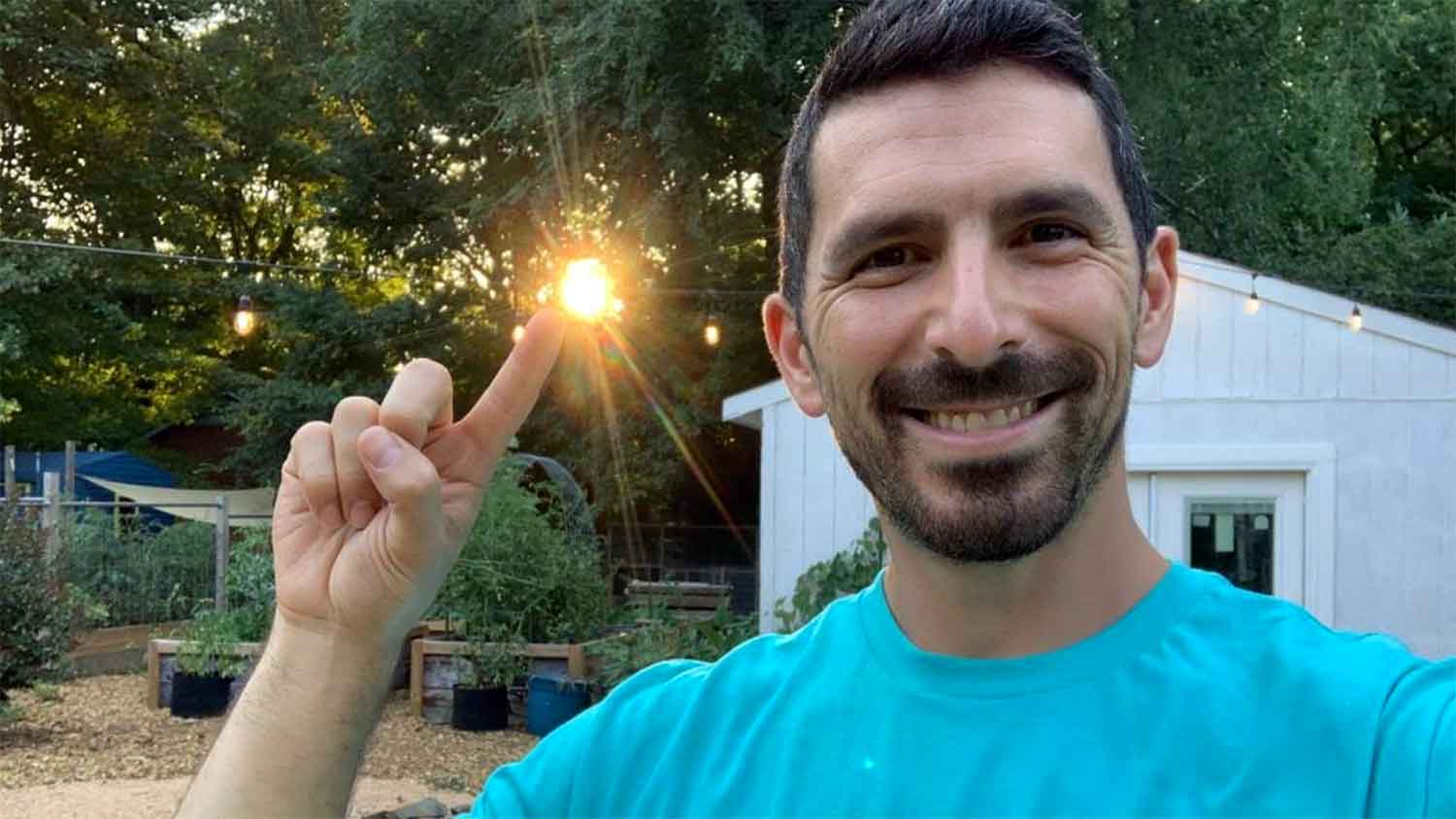
Kyle Freedman began pursuing his doctorate with Associate Professors Mark Hoffmann and Ricardo Hernández at North Carolina State University with an artful move from Philosophy to Viticulture. His current research focuses on optimizing supplemental light intensity and rooting conditions in greenhouse-grown containerized grapevines, with the aim of increasing grapevine fruiting capacity and condensing vine establishment in a vineyard into one season. This includes trunk and cordon development in addition to conditioning dormant buds for increased fruitfulness. In pursuit of this research endeavor, GE Current provided supplemental LED lighting systems. His aim was to develop a grapevine transplant that can be planted and cropped in the same year in a commercial vineyard. The process of conditioning vines for fruiting is called Precise Indoor Vine Conditioning (PIVC, Figure 1). In typical production systems, the establishment of young grapevines occurs in the field often beginning with one-year-old bare-root vines (Figure 2 A). Especially on the East Coast, with colder winters and hot and humid summers, field establishment can be slow. This can be due to weed, pest and disease pressure, damage from animal browsing, as well as unfavorable environmental conditions. The research team hopes the PIVC system will fill a niche to manipulate grapevine physiology and architecture, and serve growers as well as research as a new platform, potentially reducing a three-year establishment period in a vineyard to a single season.
A PIVC grapevine has a developed cordon with fruitful flower buds, a trunk and a strong root system. Whether or not a grapevine develops flower clusters is mainly based on the amount of light and nutrients that the vine gets in the year before fruit development. The PIVC approach is to give a young vine the best possible conditions during the first year in a controlled environment so it can directly produce fruit as soon as it is planted in the vineyard the following season. A local North Carolina vineyard, FireClay Cellars, welcomed the opportunity to test the new ‘Supervines’ and allowed the team to evaluate our very first PIVC vine transplants under real-world conditions in a vineyard (Figure 2 B)
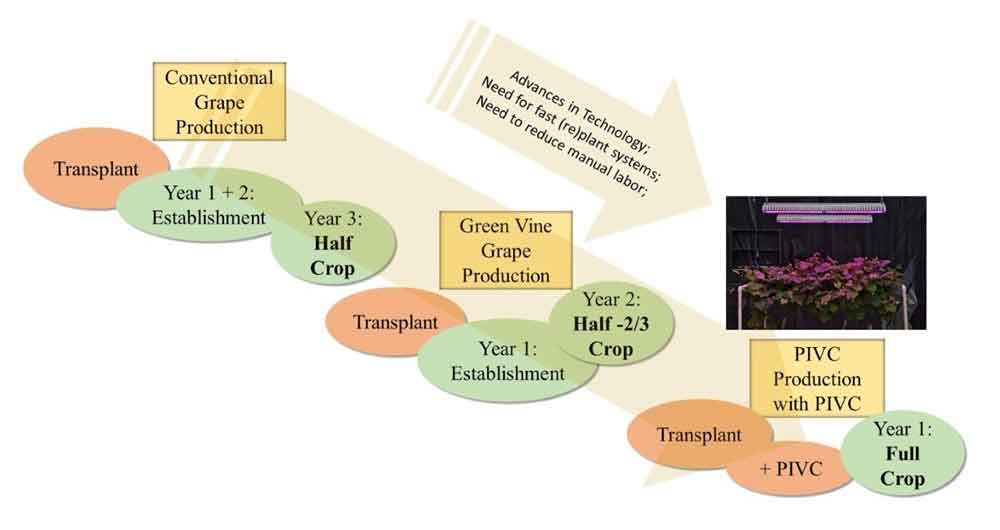
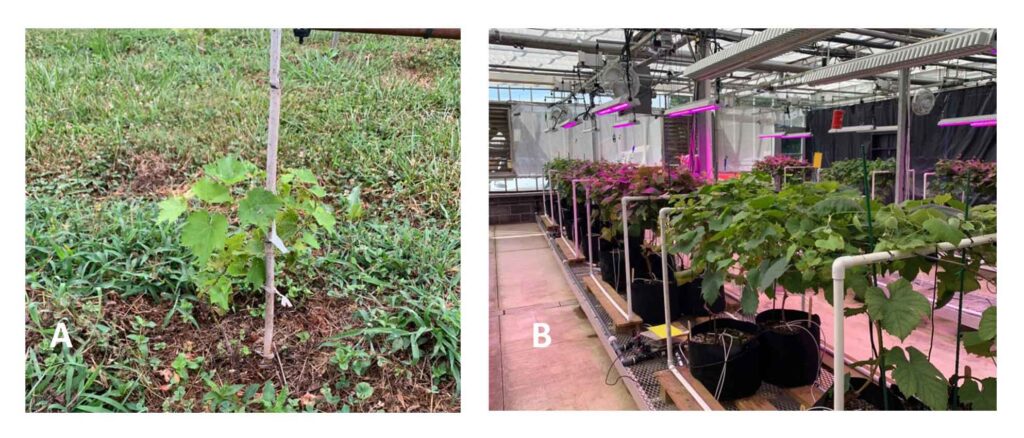
My research really focuses on leveraging controlled environment technology to understand how we can combine various components of grapevine establishment into a shorter time frame.
– Kyle Freedman
Freedman’s research began with understanding the effects of supplemental light intensity on bud development and fruitfulness. It has developed over time to observe the system holistically, including optimal container size to control vigor and increase production density (Figure 3 A).
“PIVC is designed to be a platform which can be used for various applications that require faster flowering, fruiting, or trunk and cordon development. Applications are endless, including reducing the time it takes for flowering in speed breeding, creating vines that produce fruit in their first year of planting, as well as to create strong trunks and root systems reducing management requirements by growers” (Figure 3 B).
This research has kept the grower in mind throughout the development of PIVC as many growers operate at a loss over the first three to four years of grape production and face many challenges with establishing young vines. Freedman shares, “If we can take some of this work off of the grower’s plate and speed it up with our system, we believe it will be a major cost savings to them and an impactful addition to the grapevine nursery products currently available to vineyards.”
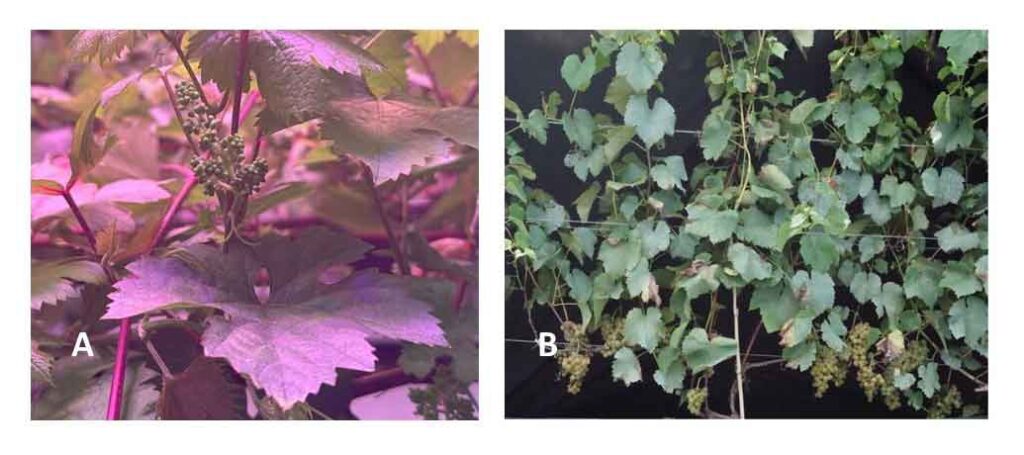
The results show evidence that increased light intensity in a controlled environment greenhouse system increases grapevine fruiting capacity. Increasing the light intensity through the use of supplemental light allows for higher daily light integral (DLI) levels or total light a plant receives in a day. Specifically, the research results showed that medium light intensity (an average of 28.7 DLI) increased the total cluster per vine for the French-American hybrid cultivar ‘Traminette’ (Figure 4). These results establish the foundation to develop a system for conditioning grapevines for early yields which can increase annual returns for growers.
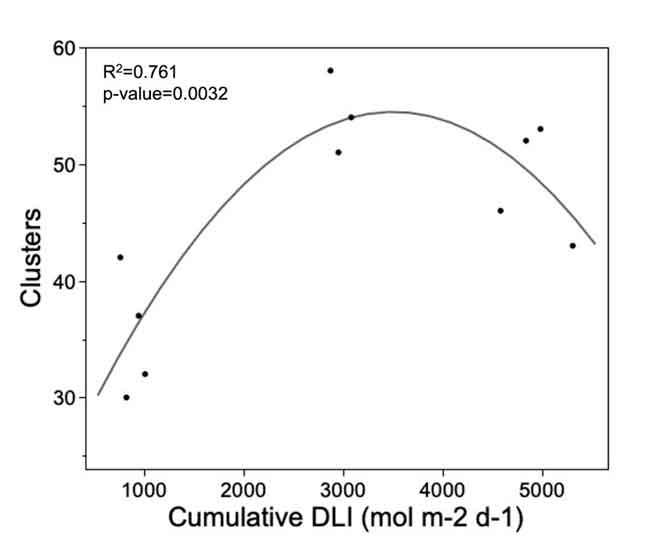
Freedman shares some of his thoughts on the research and what is left to investigate, “I am excited about what we have learned thus far and how this system can be improved for commercial application. One of the biggest components left is for us to do a thorough economic analysis of producing PIVC vines and identify how we can make this system cost-effective. This is a critical question when dealing with any CEA production system.”
He is most excited about how CEA can be incorporated into age-old production systems such as viticulture where it has virtually been absent. Whether it is to advance fundamental knowledge of plants or to develop new production systems and products, CEA will continue to permeate all of agriculture in the future.
Freedman is an NC State College of Agriculture and Life Sciences (CALS) Provost Fellowship Scholar, a recipient of the 2022 and 2023 American Society of Enology and Viticulture-Eastern Section (ASEV-ES) graduate student scholarship, a recipient of the 2023 American Wine Society Education Foundation (AWSEF) graduate student scholarship, and a CALS graduate peer mentor.
- Kyle Freedman, Amanda Lewis, Alexa Artis, Ricardo Hernández, Christian Collado and Mark Hoffmann
- Video production and editing: Amanda Lewis
- Videography: Alexa Artis
- Photo credits: Members of The Very Berry Lab
This research was funded by the North Carolina Department of Agriculture – Specialty Crop Block Grant Program and the North Carolina State University College of Agriculture and Life Sciences Innovation Grant Program.


